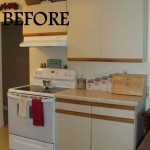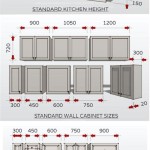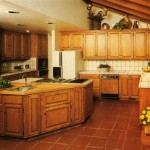How To Measure Kitchen Cabinet Doors and Windows
Accurate measurements are essential for successful kitchen renovations, whether replacing cabinet doors or installing new windows. Imprecise measurements can lead to wasted materials, installation delays, and unsatisfactory results. This article provides a comprehensive guide to accurately measuring kitchen cabinet doors and windows to ensure a proper fit and seamless integration into your kitchen design.
Measuring Kitchen Cabinet Doors
Replacing cabinet doors can significantly update a kitchen's appearance without the cost and disruption of a full cabinet replacement. However, precise measurements are crucial to ensure the new doors fit the existing cabinet frames perfectly. The following steps outline the process for accurately measuring kitchen cabinet doors.
1. Removing Existing Doors (If Applicable): If replacing existing doors, carefully remove them from their hinges. This provides unobstructed access for measuring the cabinet frame and determining the required door size. Use a screwdriver to detach the hinges from the cabinet frame, taking care not to damage the surrounding wood. Store the removed doors and hardware safely in case they are needed for reference.
2. Measuring the Cabinet Opening (Face Frame Cabinets): For face frame cabinets (where a frame is visible around the cabinet opening), measure the exact width and height of the opening. Use a precise measuring tape, and record the measurements to the nearest 1/16 inch. Measure the width at the top, middle, and bottom of the opening, and use the smallest measurement. Similarly, measure the height on the left and right sides, and use the smallest measurement. This accounts for any slight irregularities in the cabinet frame.
3. Determining Door Overlay (Face Frame Cabinets): Door overlay refers to the amount the cabinet door extends beyond the cabinet frame. Standard overlays are typically 1/2 inch, 1 inch, or 1 1/4 inches on each side. To determine the existing overlay, measure the distance from the edge of the cabinet opening to the edge of the existing door (if available). If replacing existing doors, aim for the same overlay. If choosing a different overlay, consider the visual effect and the clearance between adjacent doors and drawers. The overlay needs to be added to the cabinet opening measurement to calculate the required door size. For example, if the cabinet opening is 15 inches wide and requires a 1/2 inch overlay on each side, the door width should be 16 inches (15 + 0.5 + 0.5). The same applies to the height measurement.
4. Measuring the Cabinet Opening (Frameless Cabinets): Frameless cabinets, also known as European-style cabinets, lack a face frame. The doors attach directly to the cabinet box. For frameless cabinets, measure the exterior dimensions of the cabinet box, including the top, bottom, and sides. The door size will typically match the exterior dimensions of the cabinet box, minus any necessary gaps for hinges and door operation. A typical gap between doors is approximately 1/8 inch.
5. Determining Door Size (Frameless Cabinets): For frameless cabinets, calculate the door size by subtracting 1/8 inch from both the width and height of the cabinet box to account for the gap between doors. For example, if the cabinet box is 24 inches wide and 30 inches high, the door size should be 23 and 7/8 inches wide and 29 and 7/8 inches high.
6. Account for Door Style: Some door styles, like raised-panel or recessed-panel doors, might have slightly different dimensions than flat-panel doors. If using a door style with a significant edge profile, consider the impact on the overall overlay and door clearance. It is sometimes necessary to consult with a cabinet door supplier to confirm the exact dimensions of a particular door style.
7. Hinge Placement: Accurately measuring and specifying hinge placement is crucial to ensure the new doors align properly with the existing hinges on the cabinet frame. Measure the distance from the top and bottom of the cabinet opening to the center of the existing hinge plates. Record these measurements precisely and provide them to the cabinet door supplier. If using new hinges, consult the hinge manufacturer's specifications for recommended door prep and hinge placement.
8. Double-Check Measurements: Measure each cabinet opening multiple times to confirm the accuracy of the measurements. Label each measurement clearly to avoid confusion. Inconsistencies in measurements can easily lead to incorrectly sized doors.
Measuring Kitchen Windows
Accurate window measurements are critical for ordering replacement windows that fit properly and provide a weathertight seal. Incorrect measurements can result in improperly sized windows, leading to installation difficulties, air leaks, and potential structural damage. The following steps outline the process for accurately measuring kitchen windows.
1. Identifying Window Type: Before measuring, identify the type of window being replaced. Common types include double-hung, casement, awning, and sliding windows. Each type may require slightly different measurement techniques. Understanding the window type ensures the measurements are taken from the appropriate locations.
2. Measuring the Window Opening (Interior): Start by measuring the width of the window opening from the inside of the house. Measure between the inside edges of the window frame, also known as the jamb. Take three measurements: at the top, middle, and bottom of the opening. Record the smallest measurement as the window width. Next, measure the height of the window opening from the inside of the house. Measure from the top of the sill (the horizontal surface at the bottom of the window) to the inside edge of the top of the window frame. Take three measurements: on the left, in the middle, and on the right. Record the smallest measurement as the window height. These are the "rough opening" measurements.
3. Measuring the Window Opening (Exterior): To confirm the interior measurements and account for any variations in the window frame, measure the window opening from the exterior of the house. Follow the same procedure as with the interior measurements, measuring the width at the top, middle, and bottom, and the height on the left, in the middle, and on the right. Record the smallest width and height measurements.
4. Measuring the Jamb Depth: The jamb depth is the distance from the interior edge of the window frame to the exterior edge. Measure the jamb depth at the top, bottom, and sides of the window opening. The jamb depth is important for ensuring the replacement window fits flush with the interior wall. This measurement is crucial for determining the correct window frame size and ensuring compatibility with window trim.
5. Accounting for Obstructions: Identify any obstructions that may affect window installation, such as pipes, wiring, or trim. Measure the distance from the window opening to the obstruction. This ensures the replacement window can be installed without interference. Note any unusual features or obstacles around the window opening.
6. Determining the Window Size: After taking the necessary measurements, determine the appropriate window size. Typically, the window size will be slightly smaller than the rough opening to allow for shimming and insulation. Consult with a window supplier or manufacturer for specific sizing recommendations based on the window type and installation method. They can provide guidance on the appropriate tolerances and clearances necessary for a proper fit.
7. Consider Window Features: If replacing a window with specific features, such as grids, muntins, or custom shapes, provide detailed specifications to the window supplier. This ensures the replacement window matches the desired aesthetic and functional requirements. Accurately describe any custom features to minimize errors and ensure satisfaction.
8. Professional Measurement: For complex window installations or when unsure about the measurement process, consider hiring a professional window installer to take the measurements. A professional can ensure the measurements are accurate and account for any potential installation challenges. While it may involve an upfront cost, professional measurement can prevent costly errors and ensure a successful window replacement project.
Key Points for Accurate Measurement
Accuracy in measurement is paramount for both cabinet doors and windows. The following key points serve as reminders for success.
1. Use the Right Tools: A high-quality measuring tape is essential for accurate measurements. Ensure the tape measure is not bent or damaged. Use a level to ensure measurements are taken horizontally and vertically. A digital level can provide even greater precision.
2. Record Measurements Clearly: Write down all measurements immediately after taking them. Use a consistent format and label each measurement clearly to avoid confusion. Double-check all recorded measurements for accuracy. Clear and organized notes prevent errors during the ordering process.
3. Measure Multiple Times: Take each measurement at least twice to confirm its accuracy. Discrepancies in measurements indicate a potential error that needs to be investigated and corrected. Multiple measurements increase confidence in the final dimensions.
By following these guidelines, homeowners and contractors can accurately measure kitchen cabinet doors and windows, ensuring a proper fit, a seamless installation, and a visually appealing and functional kitchen space. This detailed approach minimizes the risk of errors, reduces material waste, and ultimately contributes to a successful renovation project.

Measure Your Kitchen Cabinets Before Designing The Layout

Cabinet Measure Guide Kitchen Rta Cabinets Orange County Pre Made Whole Quartz Countertop Slab Prefab Granite Installation

How To Measure Kitchen Cabinets Perfectly In 7 Steps Cabinet Kings

How To Properly Measure For Kitchen Cabinets Cabinetmaker S Choice

How To Measure Kitchen Cabinets 11 Steps With Pictures

How We Measure For Kitchen Cabinets Model Remodel

Measure Your Kitchen

How To Measure For New Cabinets Cabinet Now

How To Properly Measure For Kitchen Cabinets Cabinetmaker S Choice

How To Measure Your Kitchen Ksi Cuisine Solutions
Related Posts








